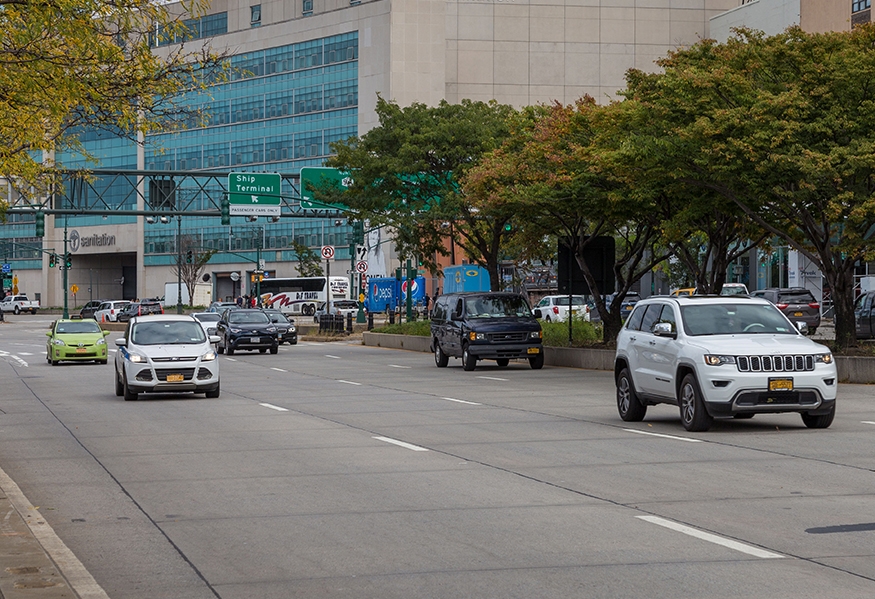Usage: Standard
Mixture comprising cement(s), aggregate(s), and water, which may include other chemical admixtures that hardens to form a solid road surface. The mixture may be poured over metal reinforcement bars.

West Side Highway, Manhattan
Benefits
- Provides durable road surface with high friction coefficient
- This material is widely available and cost-effective
- Resists rutting and shoving that can occur with asphalt
- Compared to asphalt, reduces impact of vehicle travel vibrations on sub-surface features and neighboring structures
- Higher SRI than asphalt, which helps reduce urban heat island effect
Considerations
- Difficult and more expensive to replace or patch in sections where utility cuts or defects occur
- Noisier than asphalt
Application
- May be considered for use in Shared Streets
- Appropriate for roads with high motor vehicle volumes and/ or gross weight
- Should be used wherever engineering criteria dictates, such as bridges, vaulted roadways, or bus pads
- Should not be used where frequent utility cuts are likely
- Will be evaluated case-by-case based on engineer review of roadway structure
- DOT generally maintains this material
Design
Specification source: DOT Standard Specifications Section 3.05, 4.05
Detail source: DOT Standard Details drawing H-1050
Detail source (bus pad): DOT Standard Details drawings H-1005, H-1005 A
- Must have joints to allow for expansion no more than 20 feet apart
- May require metal reinforcement bars as specified by DOT
- Sustainability opportunity: Supplementary cementitious materials (SCM)
Maintenance
- Patching may result in different coloration

